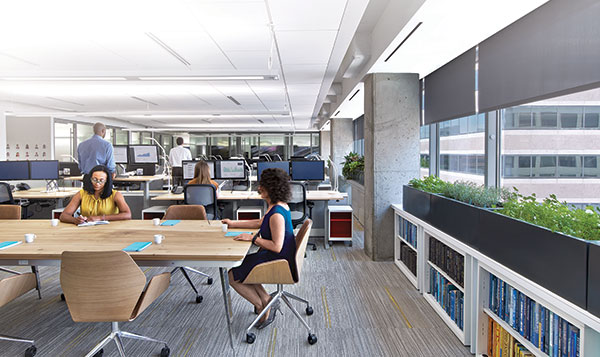
The University of Oregon has published a white paper, “The Impact of Lighting and Views in the Workplace of the Future” that concludes that daylit spaces with controlled lighting and views can improve occupant well-being, workplace productivity, and satisfaction by positively influencing various physiological and psychological processes. Lighting and views also impact property value and employee recruitment and retention.
“In the past, we spent a lot of energy trying to make our lighting systems as uniform as possible. We now know that it matters when, where, and how much light we are exposed to, and the field is working to develop lighting systems that offer more holistic benefits,” says Siobhan Rockcastle, co-author of the white paper and director of UO’s Baker Lighting Lab. Personal shading and electric lighting control systems can help realize the benefits of daylight and views while significantly improving comfort, satisfaction, and energy performance.
“The demand for daylight, views, and personal controls are continuing to increase in the workplace,” says white paper co-author, Kevin Van Den Wymelenberg, PhD., director, Institute for Health in the Built Environment, where “we believe that enough is known about the influence of the visual environment on human well-being and performance to recommend action.” The white paper discusses literature indicating the value of daylight indoors to support of healthy circadian rhythms and improve sleep quality. However, the paper cautions against over-generalizing what are currently highly contextual and typically discrete findings.
The white paper recommends a measured approach to lighting practice, utilizing natural daylight where possible and electric lighting, patterned on the cycles of the natural environment, that reinforces the body’s natural rhythms. This approach should be dynamic. Studies show occupant preferences vary drastically in different contexts and the ability to respond to these changes is a key predictor of user satisfaction. Furthermore, lighting should not be evaluated only with respect to visual-task performance. The experiential qualities of daylight, as well as the natural connections fostered by views, have the potential to significantly improve aspects of health and mood.
To learn more about the emerging evidence and our interpretation, read the whitepaper here.
“The Impact of Lighting and Views in the Workplace of the Future” white paper, which was sponsored by Lutron Electronics, was presented at the Illuminating Engineering Society Annual Conference in Louisville, August 2019.
